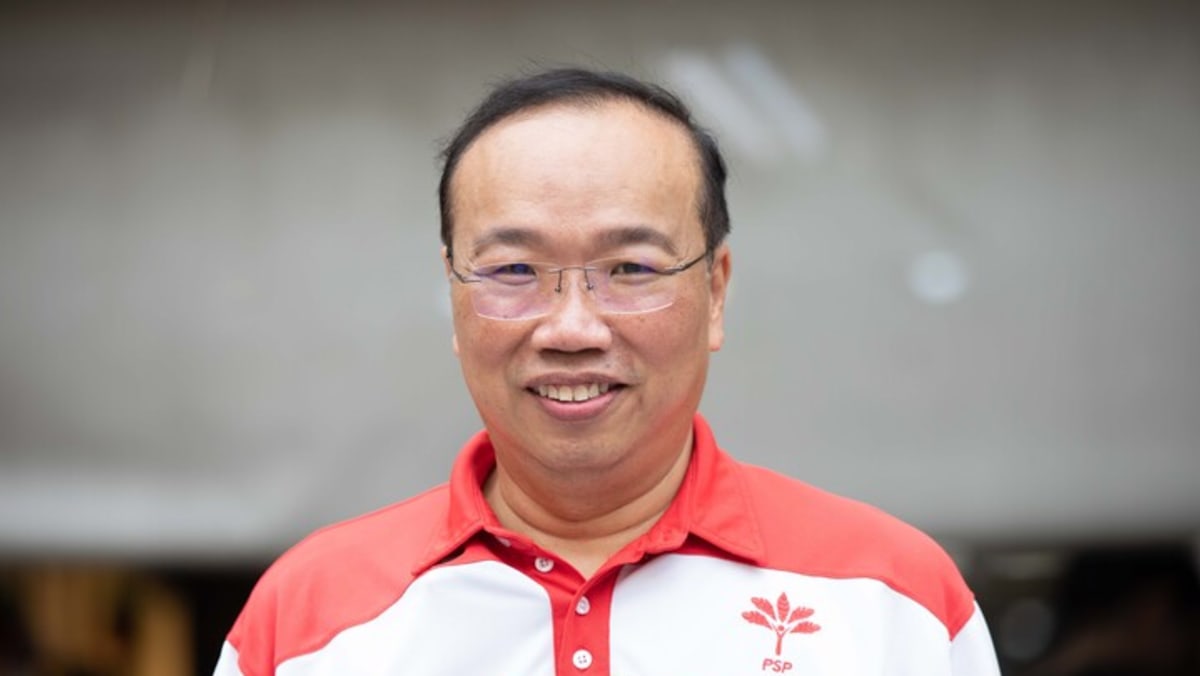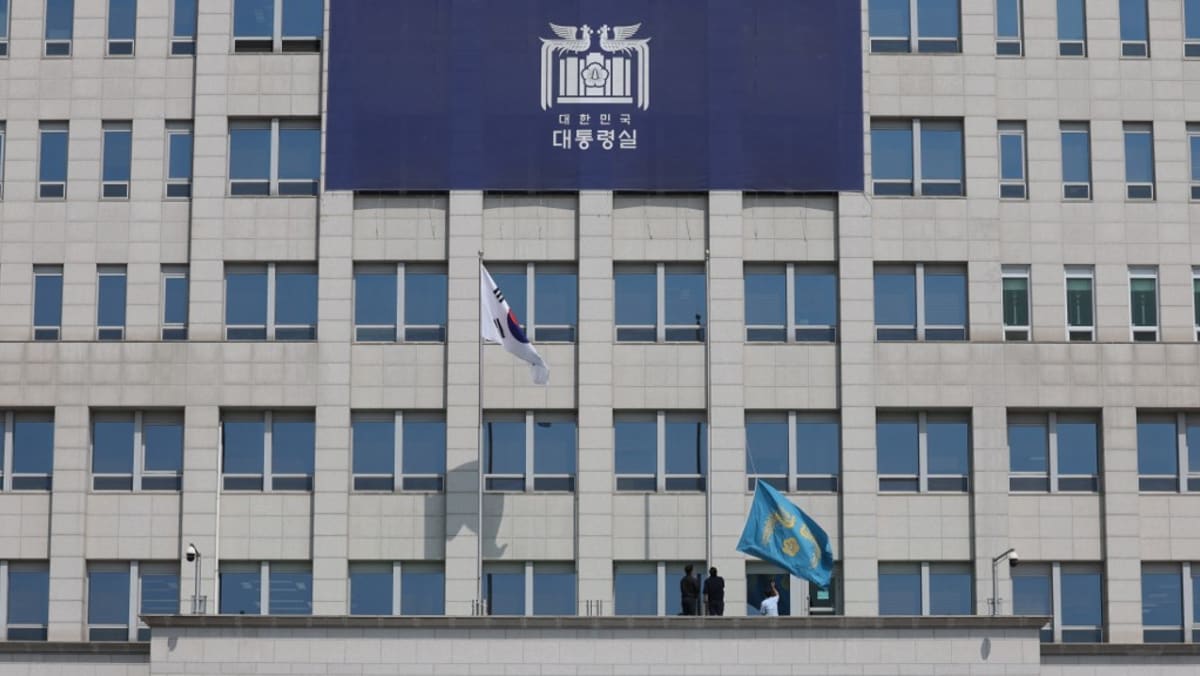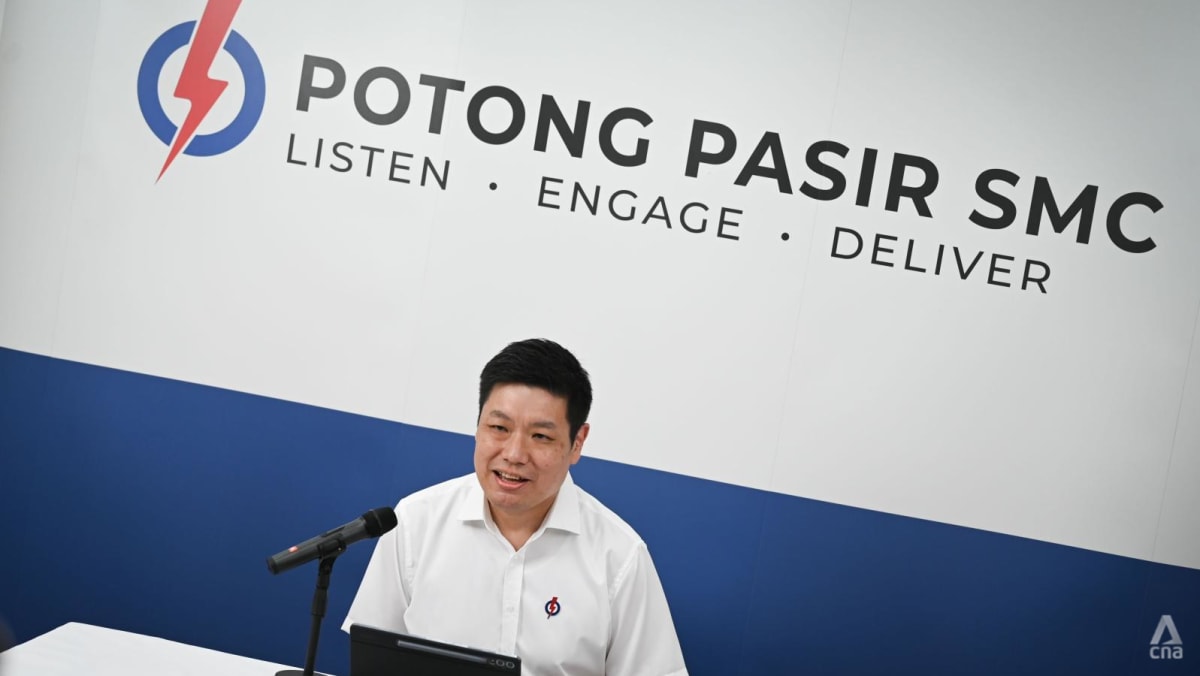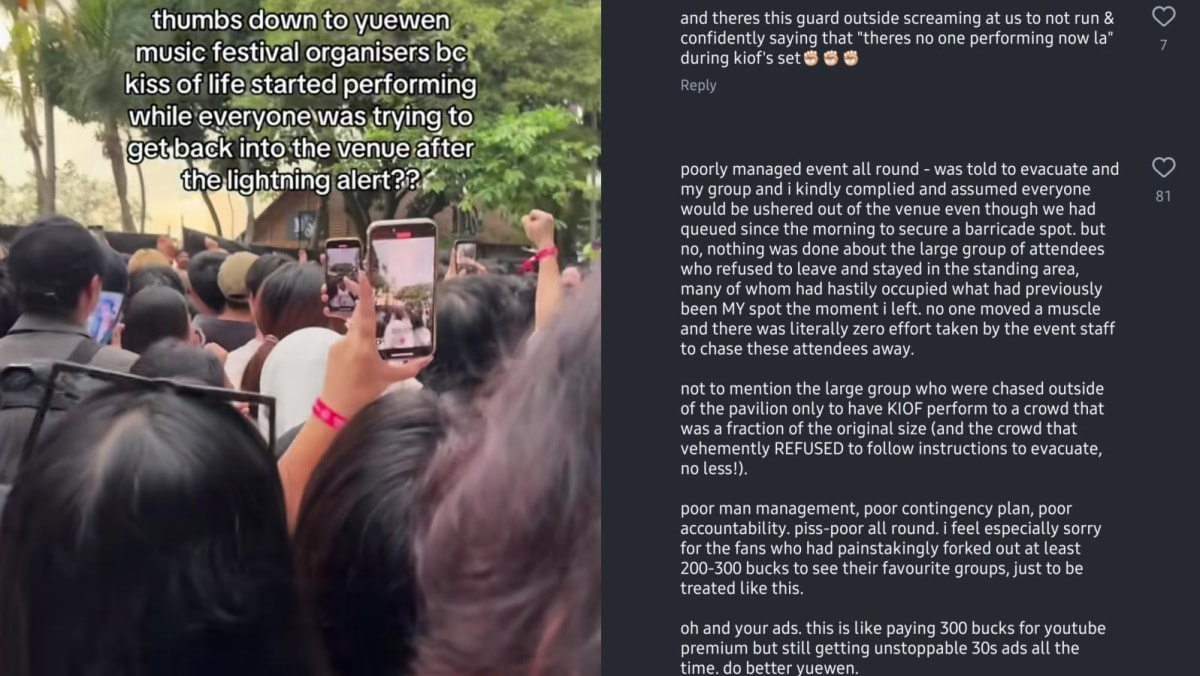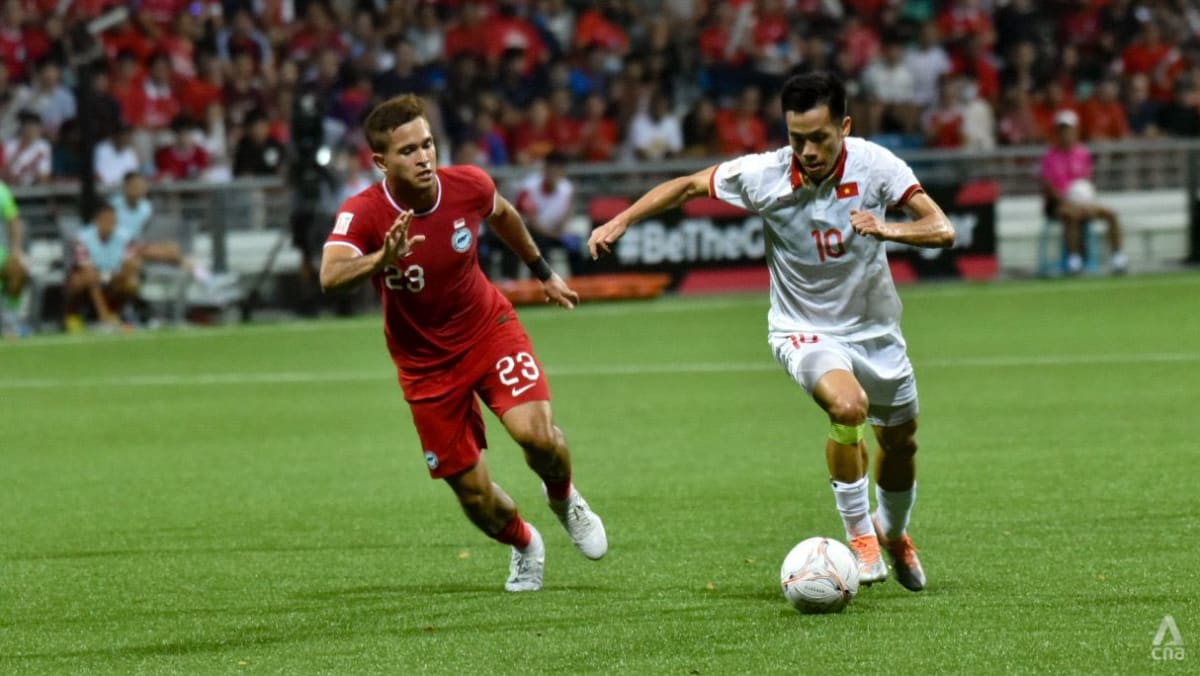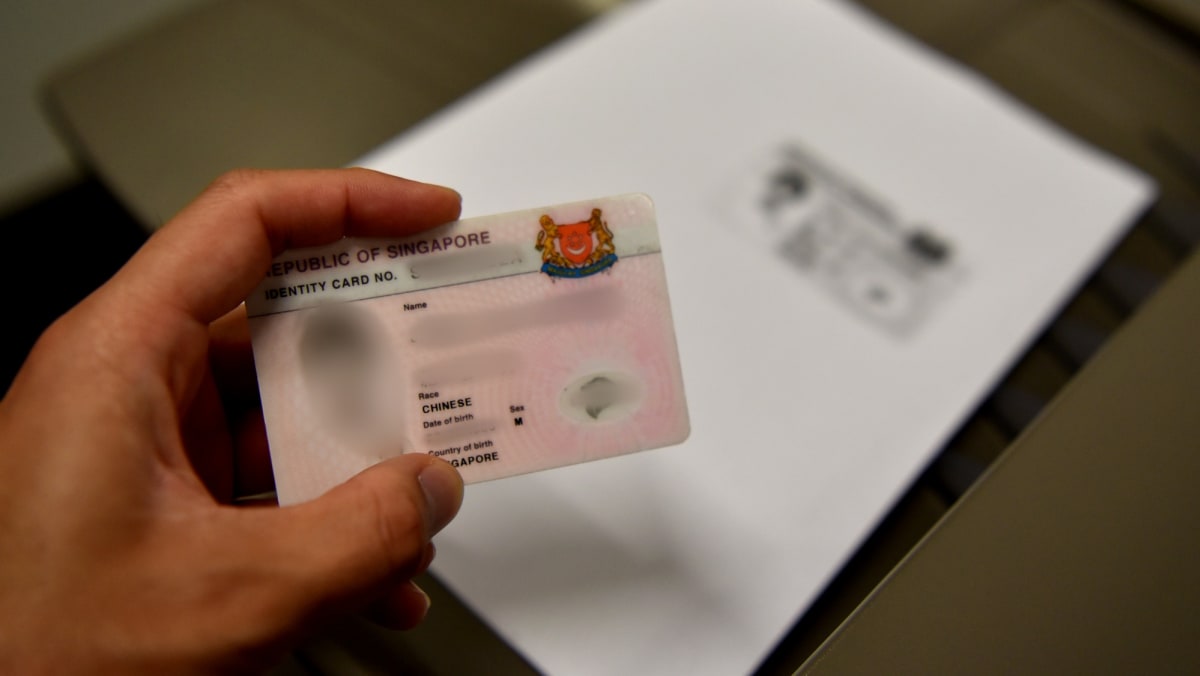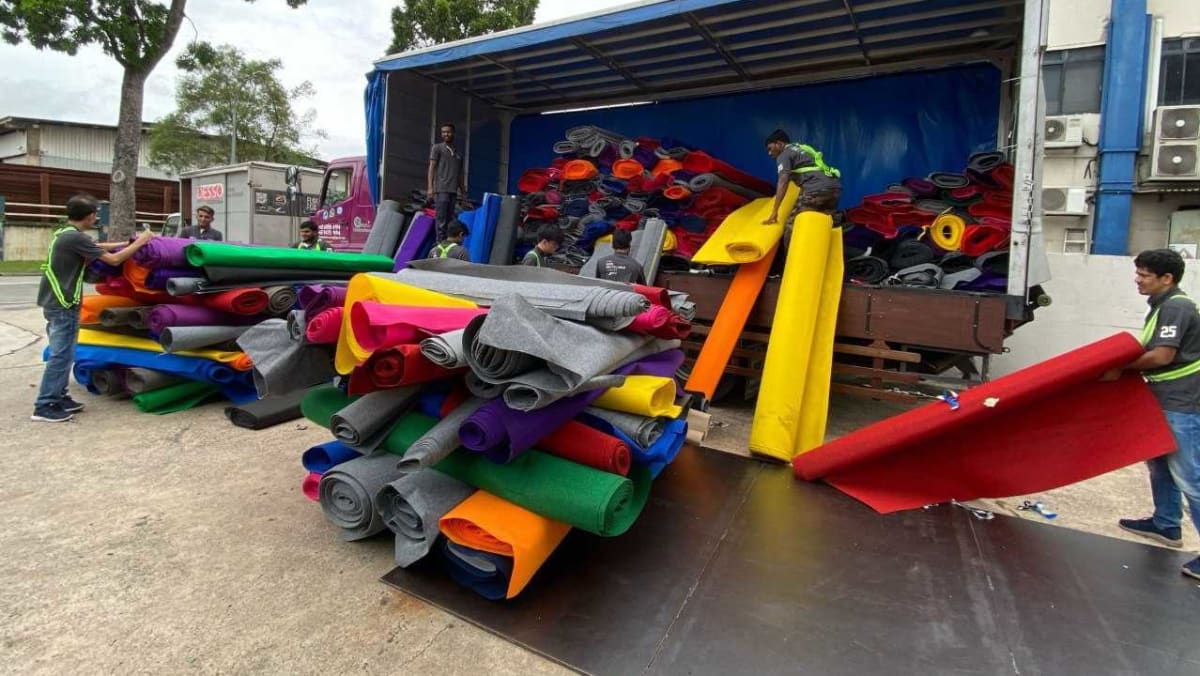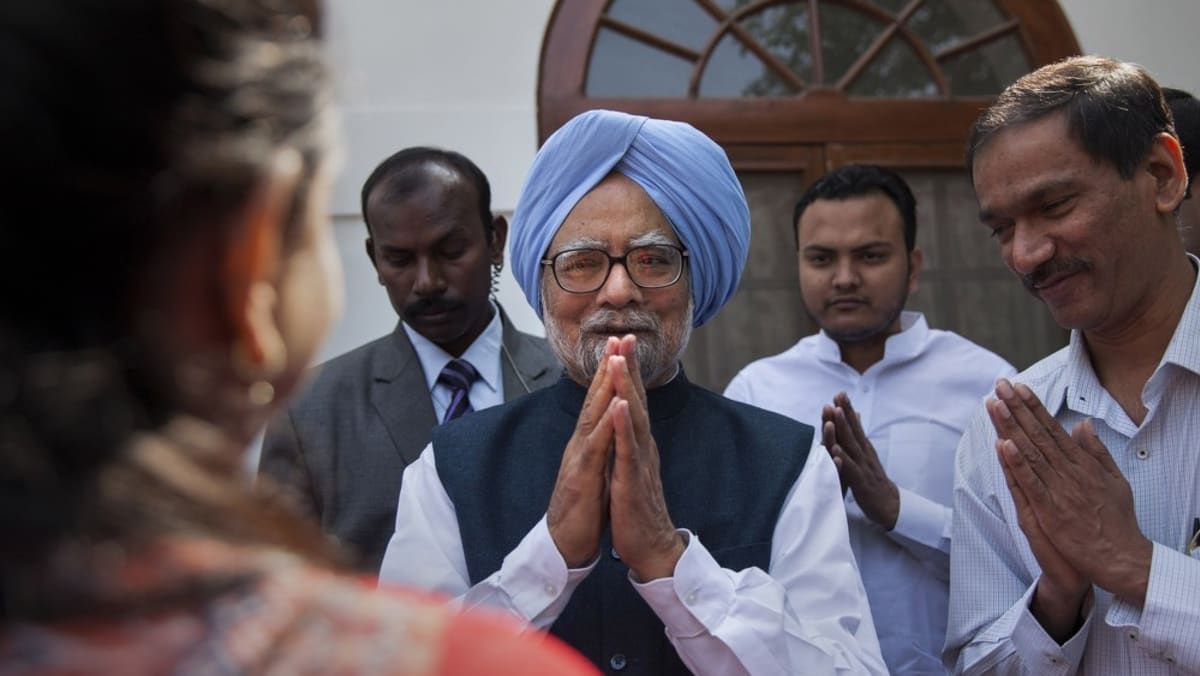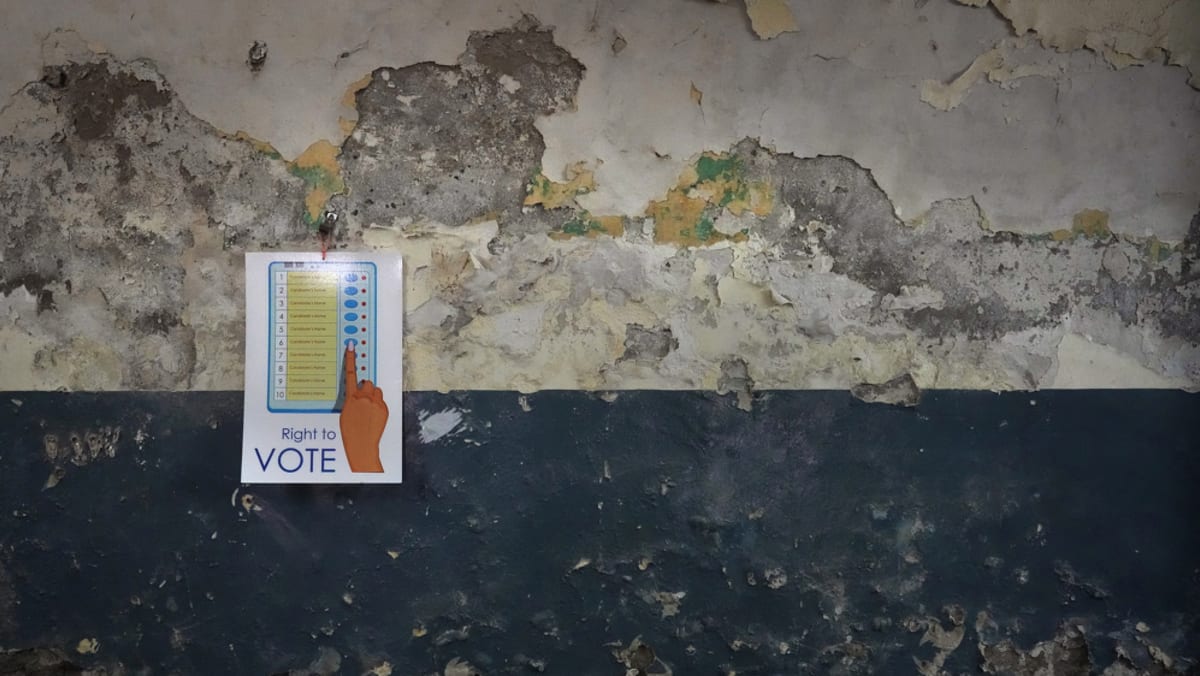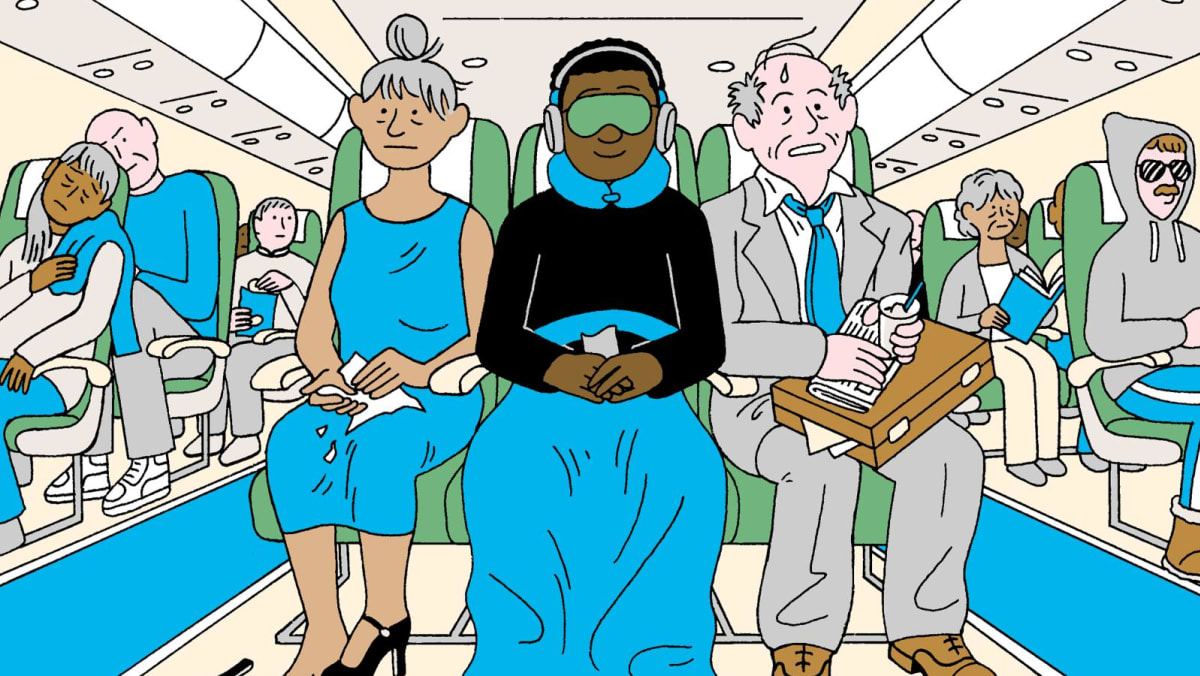SINGAPORE: The goal sounds simple – hit 20 shuttlecocks in a row, five times. But the catch is he has to start from zero if he misses one or it hits the net.
That may seem like an easy feat to most badminton players, but for 23-year-old Xavier Lim, it is a major challenge that he dreads during his thrice-a-week practice sessions.
When CNA sat in to watch one recent session, Mr Lim hit five consecutive shuttlecocks successfully on his first attempt before the sixth one hit the 1.55m-high net.
“Restart!” his coach shouted with laughter from the other side as he picked up the fallen birdies.
The shuttlecocks flew again, sending the 135cm-tall athlete to all parts of his side of the court. He had to start from zero once more before finally making it to 20 on his third attempt. He then had to repeat the feat another four times.
 Xavier Lim is Singapore’s only professional badminton player with achondroplasia, a form of dwarfism. (Photo: CNA/Lim Li Ting)
Xavier Lim is Singapore’s only professional badminton player with achondroplasia, a form of dwarfism. (Photo: CNA/Lim Li Ting)
Mr Lim is Singapore’s only professional badminton player with achondroplasia, a form of dwarfism.
But his condition doesn't mean that he is given special concessions in his beloved sport.
“Everything in the game is the same – the height of the net, size of the court, the shoes I wear and the rackets we use. I wish it (the court) was smaller, but it’s all the same,” Mr Lim told CNA.
Despite competing professionally for six years, he still feels amazed how the kid who constantly missed the shuttlecock when playing with his father at the car park now finds himself playing on courts across the region.
“My dad always tells me to remember who taught me (badminton) and to let everyone know,” he said.
“I have a video of me hitting (the shuttlecock) three times in a row and I dropped the racket and ran around celebrating.”
Mr Lim’s free-spirited attitude and zest for life can be seen both on the court and during breaks, when he playfully tried to kick his own head – a party trick that he used to effortlessly flaunt but gets harder as he grows older.
The athlete, who works full-time as a pre-registration pharmacist, was determined very early on to prove that his height would not limit him from being the best version of himself.
Even when he was growing up, he never allowed himself to feel like an outcast, and counted himself lucky to always be included.
He owed this sense of belonging to the sport that has helped him “overcome the mental and physical boundaries” over the years.
“I’ll admit that I was initially limited by my own presumptions of my condition. So I assumed I couldn’t run, jump very high, and do many other things.”
But his misconceptions changed when he started pushing himself to meet targets and surprised himself with how much he could do, the distances he could run, and even how high he could jump.
“At the end of the day, it’s nice to get medals but the biggest lesson I gained was understanding the boundaries were mostly in my mind. Yes, it was hard at some points, but it showed me that I can push the boundaries by pushing myself.”
 Xavier Lim trains on the badminton court three times a week. (Photo: CNA/Lim Li Ting)
Xavier Lim trains on the badminton court three times a week. (Photo: CNA/Lim Li Ting)
FROM PAINS TO PROGRESS
Being an athlete with a disability also meant that Mr Lim was more prone to injuries, and a severe one in 2023 meant he had to prioritise his recovery and refrain from participating in competitions this year.
After competing in the 2023 ASEAN Para Games in May, he landed a spot in the Western Australia Para Badminton International in October last year.
Although he found the latter competition “much less nerve-racking” and had been injury-free for some time, no amount of practice could have prepared him for what happened next.
“I didn’t play well during the games, and even had to undergo surgery after tearing my MCL (medial collateral ligament) and meniscus,” Mr Lim said. Both are types of knee injury.
The two months of recovery was no easy feat for the athlete, who spent two months out of training and the last on crutches.
"I had to do a lot of reconditioning of my legs, like having to relearn how to walk, regain strength in my leg muscles to do day-to-day activities and also recondition my legs and stamina to play badminton again."
The injury was made more difficult as Mr Lim had been diagnosed with lumbar spinal stenosis in 2020, which meant he suffered from burning pains from his back through to his legs, sometimes accompanied by numbness.
It was a condition that is often seen in the elderly after years of wear and tear, but sport players with dwarfism tend to develop it at an earlier stage in their lives, he explained.
Mr Lim ended up going for spinal surgery in May 2021, and it took him an entire year to fully recover.
"It definitely affected the intensity at which I trained and I had to miss some training sessions or take on a lighter load because my back was too sore. I even questioned if I wanted to carry on playing badminton.”
But his coach of almost two years was hell-bent on making sure he pulled through.
“He’s a driven boy and as much as I love to push him to go beyond his limits, he pushes himself very hard too. Sometimes so hard till he turns pale,” said Mr Andy Wu, a Singapore para badminton coach.
Mr Wu, who sees the athlete as “more of a brother”, claimed to be harder on him than his able-bodied students.
“I know that he faces a lot of adversity as a para-athlete, but I’ve been touched by his passion and resilience, especially how he would come and train thrice a week after work,” he said, praising the way Mr Lim's game has matured.
“He used to say he would give up badminton whenever he felt defeated. But through the years, he has recognised what he can and can’t control on the court. He has improved on what he can control, and let go of what he can’t.”
Mr Wu called for more support to be given to para-athletes looking to achieve more, a sentiment that Mr Lim echoed strongly as he has his heart set on taking part in the 2028 Los Angeles Paralympics.
“It’s a goal for any athlete to be at the Olympics or the Paralympics. It’s the pinnacle of sporting events, and I would definitely want to be there.”
A BIG CIRCLE OF SUPPORT
As Mr Lim makes his mark as Singapore’s first professional badminton player with dwarfism, others born with short stature have echoed his positive outlook and determination to live a regular life.
It never bothered Mr Benovan Sim that his twin brother stands at 194cm, while he was often left waiting around when his friends took rollercoaster rides at Universal Studios Singapore.
“There’s a height limit of 120cm for rollercoaster rides, so I’m usually sitting at one corner waiting for them or helping them queue for the next ride.”
Mr Sim – who stands at around 110cm – has absent tibia fibula. To put it simply, he was born without shin bones and knee caps, which means his thighs are directly connected to his feet.
“I have difficulties walking for long periods, and would often get back and leg aches after just 20 minutes of walking,” Mr Sim told CNA, pointing to his feet which are bent at an angle.
-2.jpg?itok=VQoBftpJ) 22-year-old Benovan Sim works as an associate consultant at the Central Provident Fund Board's data protection operations department. (Photo: CNA/Lim Li Ting)
22-year-old Benovan Sim works as an associate consultant at the Central Provident Fund Board's data protection operations department. (Photo: CNA/Lim Li Ting)
Although one might assume that such a condition could result in bullying, especially during the schooling years, the 22-year-old spoke highly of his peers and said he never once felt excluded.
“Having friends in secondary school was really a blessing for me and I still keep contact with many of them. They helped and supported me throughout the years, in more ways than one.”
Mr Sim found that his love for sports acted as the perfect bridge between him and his peers, especially for those who were wary of how to approach him initially.
“I would usually be at the fitness corner or basketball court after school, and other students would invite me to join them. They would always be willing to teach me, so I never felt discriminated (against) because of my short stature.”
While Mr Sim counted himself lucky, his parents felt the exact opposite when he was born.
“When I was born, the doctors told my mother that I wouldn’t be able to walk. But she was determined to prove them wrong and pushed me to learn,” he said, adding that he used to wear special shoes to keep his feet from bending when he walked.
“My parents helped me defy the odds,” he said as he counted with his fingers the different sports that he has been able to take part in, such as swimming and taekwondo.
LIVING AN ORDINARY LIFE
Mr Sim has grown used to the stares and whispers that he often faces in public, and said that parents sometimes don’t teach their children the polite way to ask about his disability, but would hurriedly pull them away instead.
But such occurrences no longer bother him, as he chooses to remember the pleasant interactions he has had in public.
“There was a lady who pulled me aside at the MRT station and asked if I was comfortable if she prayed over me. I’m not a Christian but I knew she did it out of goodwill, and it was nice that she did so.”
Even though he will be in pain after just 20 minutes of standing, commuters on the train or bus do not always offer him a seat.
“Being short means your current centre of gravity is really low, so it's very easy to balance. So even if I fall, my hand reaches the ground quickly,” he said with a laugh.
-1.jpg?itok=ls0onWB6) Benovan Sim says he has grown used to the stares and whispers he faces in public. (Photo: CNA/Lim Li Ting)
Benovan Sim says he has grown used to the stares and whispers he faces in public. (Photo: CNA/Lim Li Ting)
Speaking to CNA at Central Provident Fund Board’s (CPFB) office in Novena, where he has worked for two years, Mr Sim said he greatly appreciated the efforts of his colleagues and managers for the good experience he has had right from the beginning.
“CPF will announce to everyone that a person with disabilities will be joining the team, so there was a lot of support from my first day.”
CPF has been awarded the Enabling Mark (Gold) award, which recognises organisations for their best practice and outcomes in disability-inclusive employment.
“Most of my friends are people without disabilities till I got to CPF and met others with different disabilities,” the associate consultant of the organisation's data protection operations department said.
Mr Sim never felt discriminated against for his height, and would often get help from his colleagues without even having to ask.
“We have a modem in the data centre that is slightly out of reach and I would have to tip-toe when I use it. But my team members always offer to take on the extra task or accompany me in case I need help.”
Mr Lim makes it a conscious point to show those around him that he can do whatever others can, and he encourages others of short stature to ensure they don't allow their height to stand in the way of what they can achieve.
“We’re the same as normal people. We can do the same things, we just need some help sometimes.”
This is the first of two articles on people in Singapore with short stature. In the next part, which will be published on Jan 1, 2025, CNA speaks to parents whose children have been diagnosed with dwarfism.
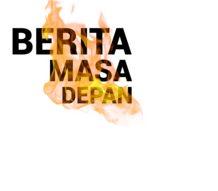

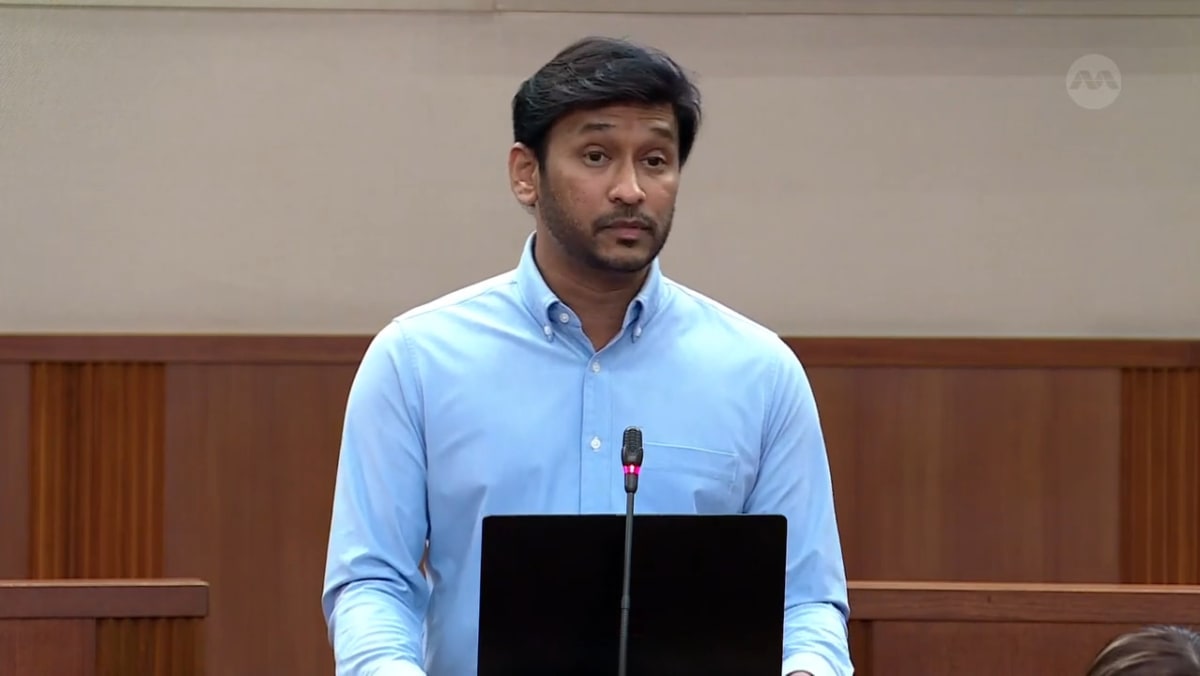
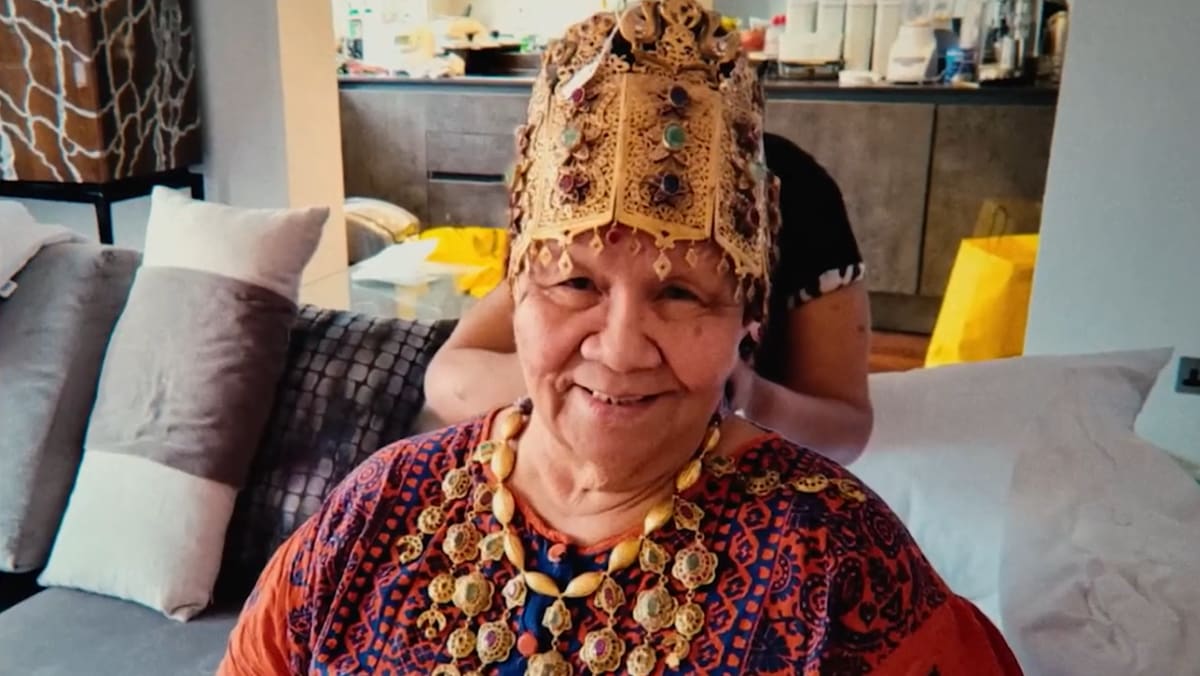
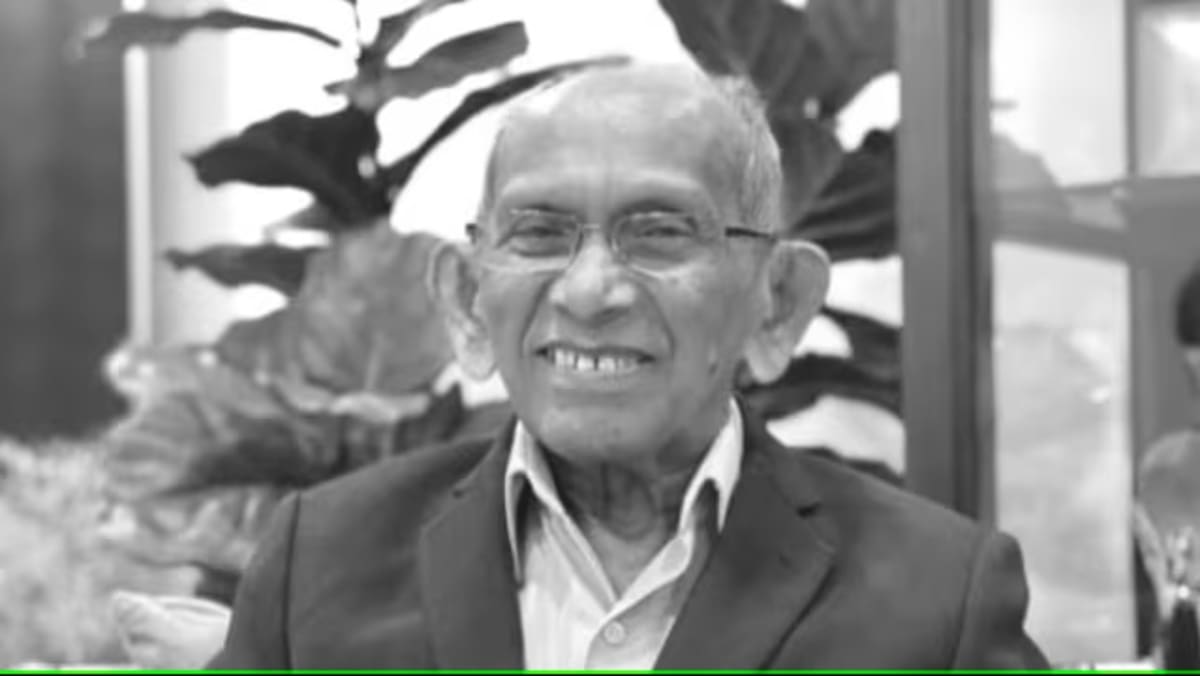

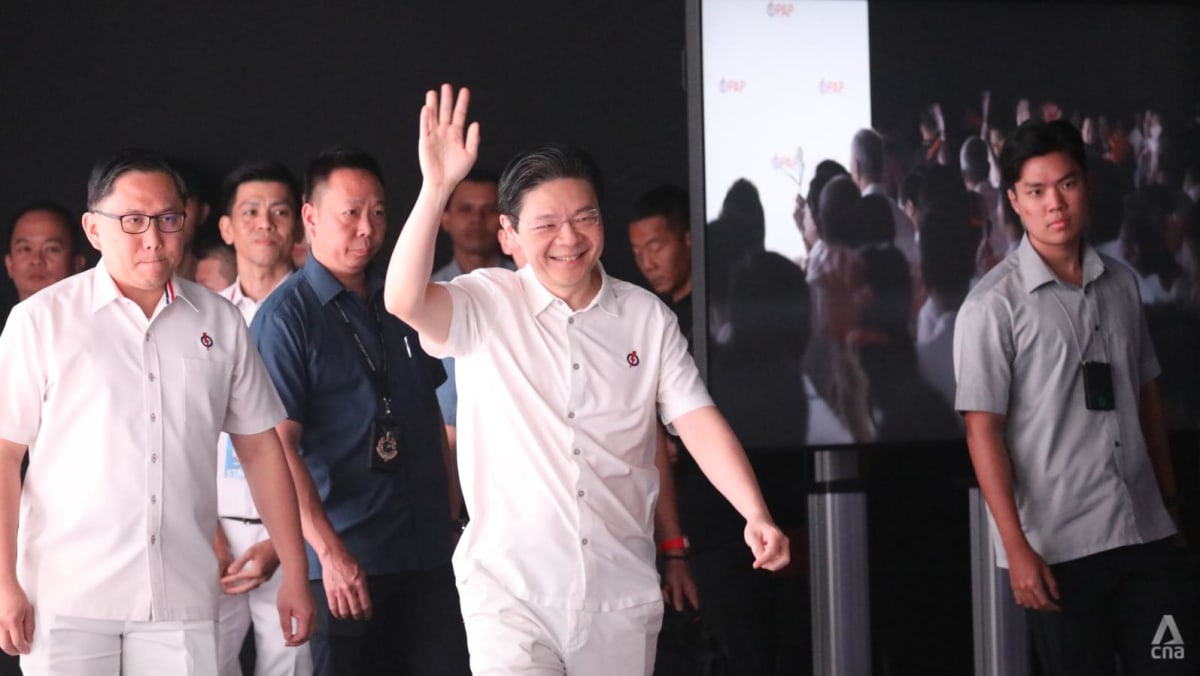






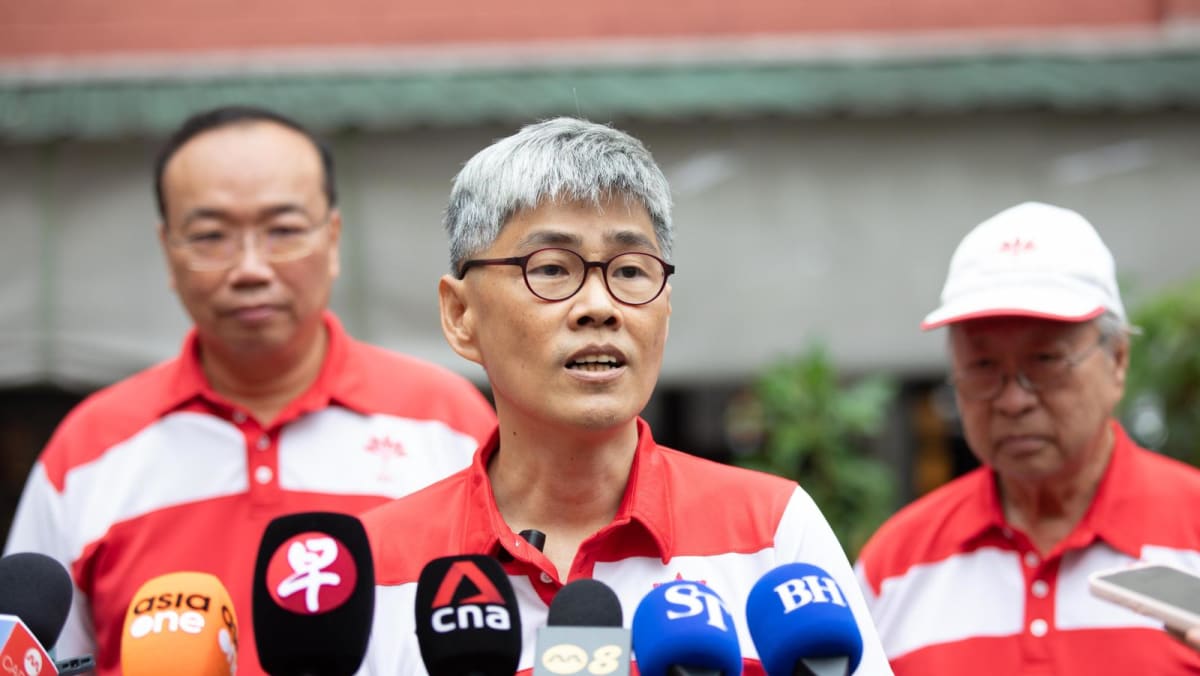
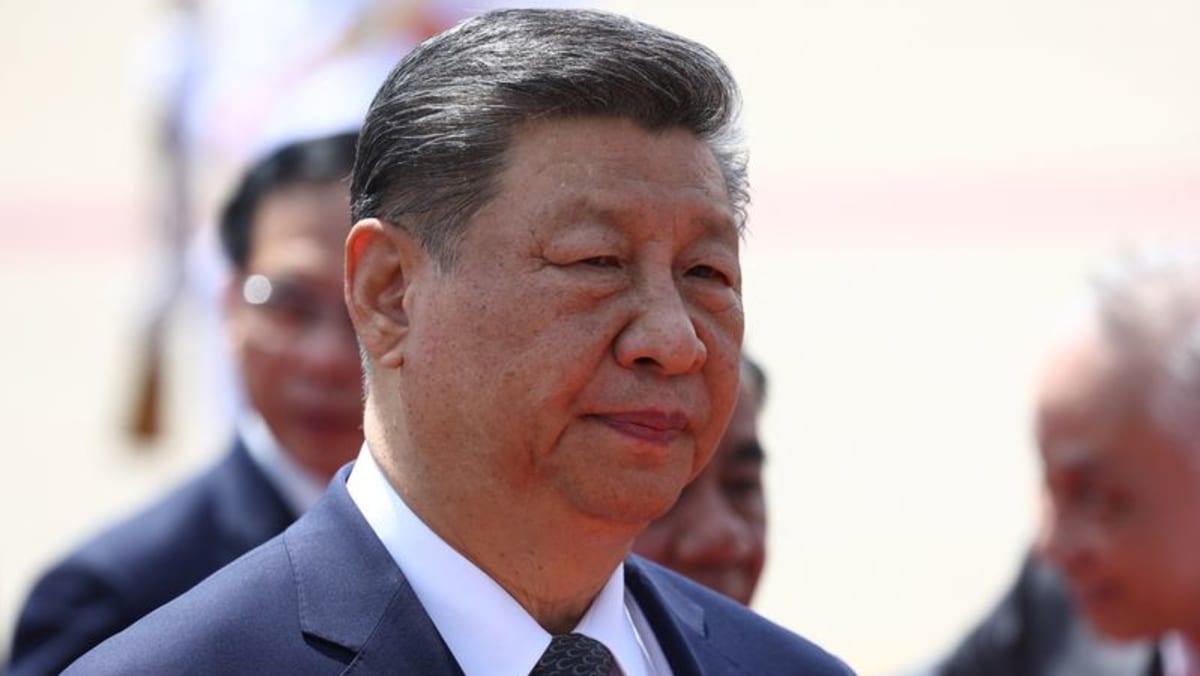
.png?itok=erLSagvf)
